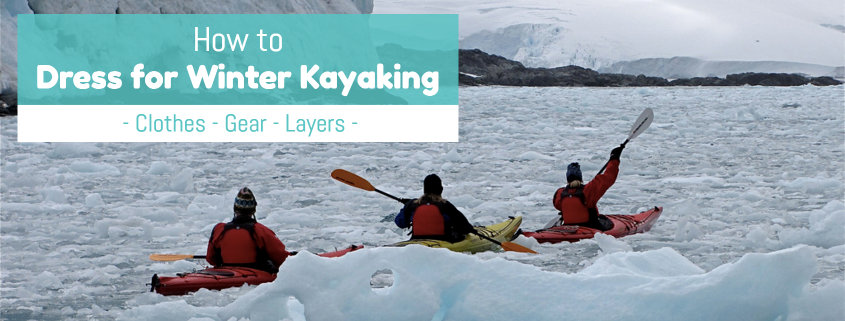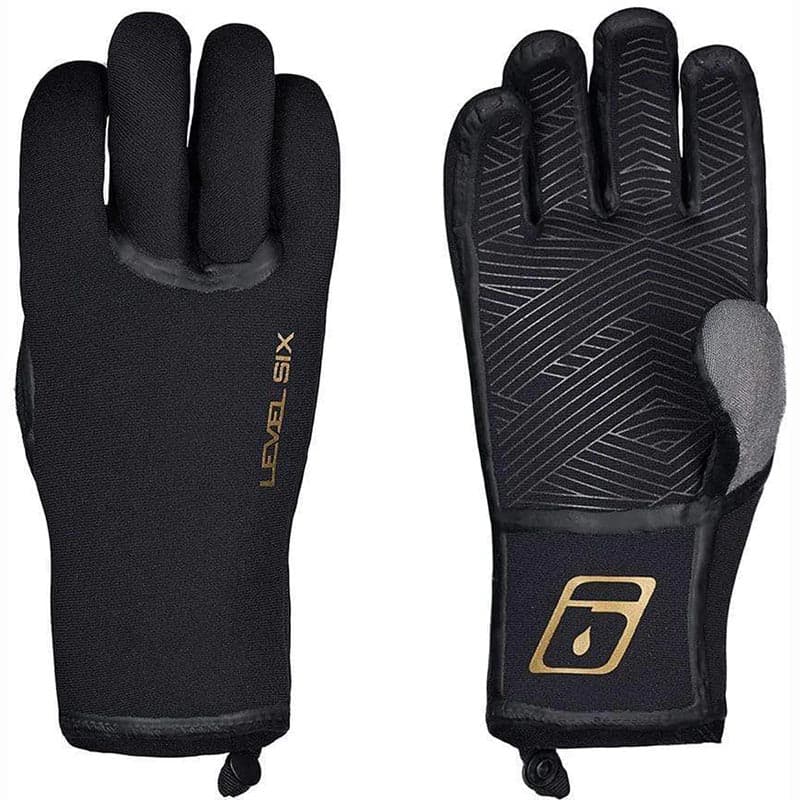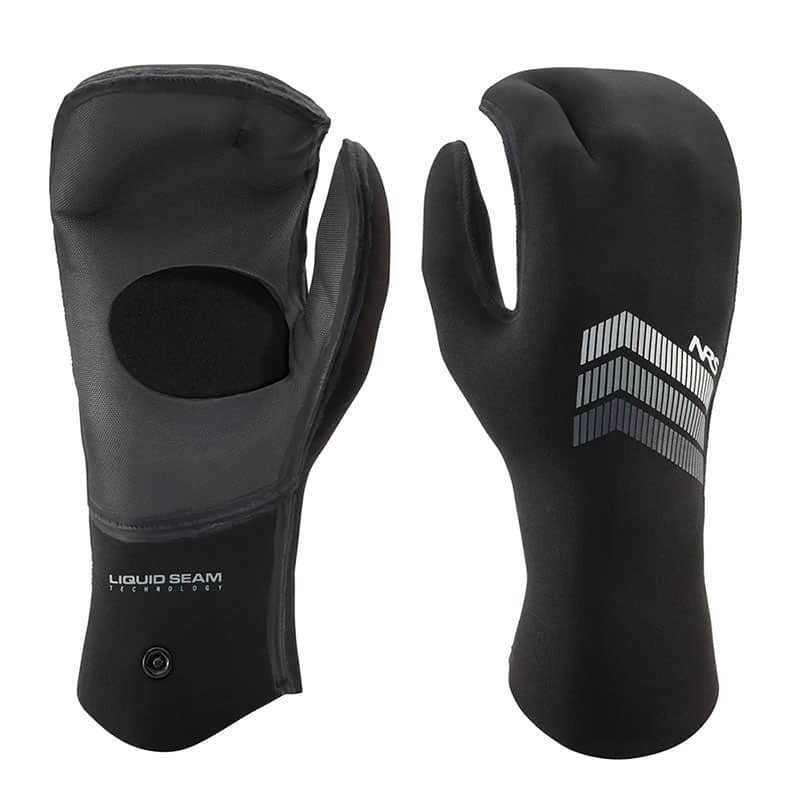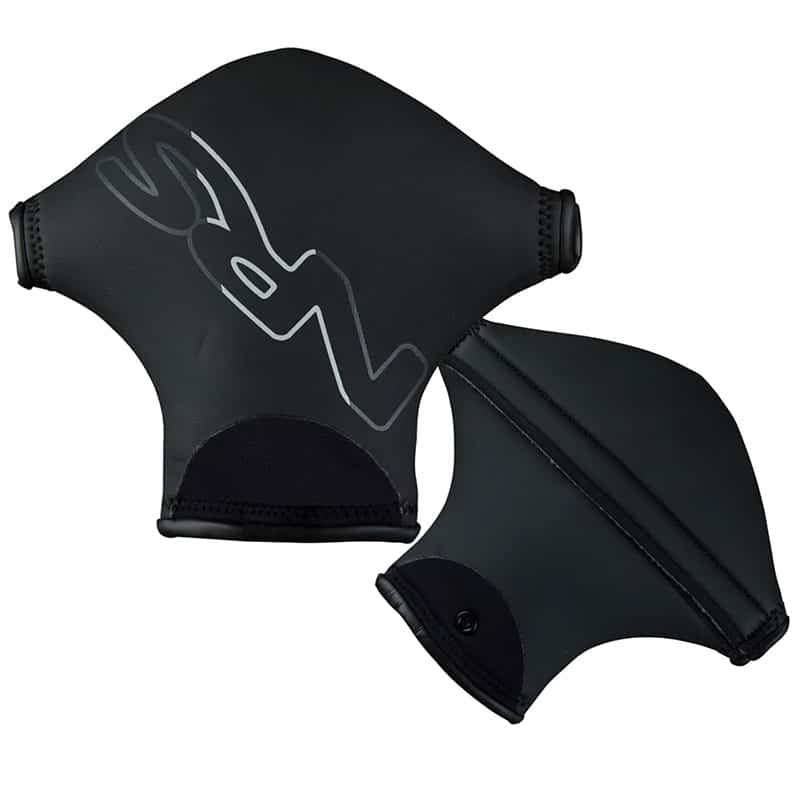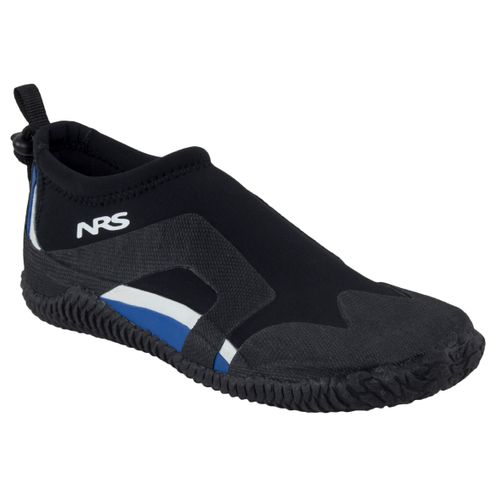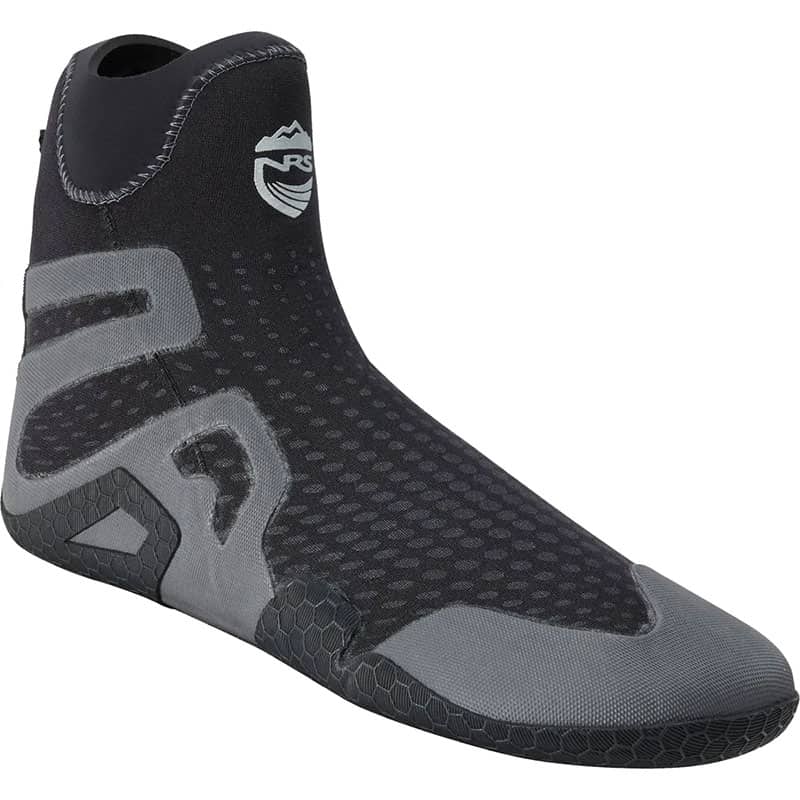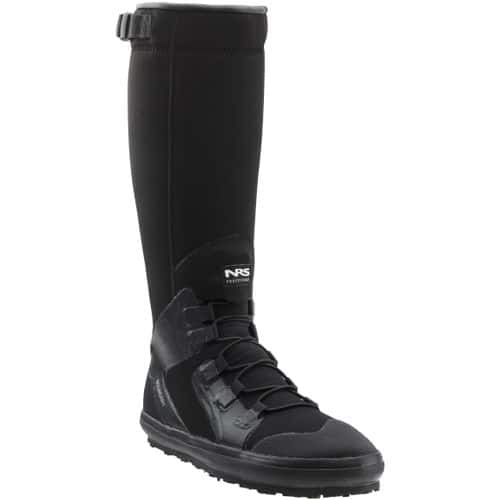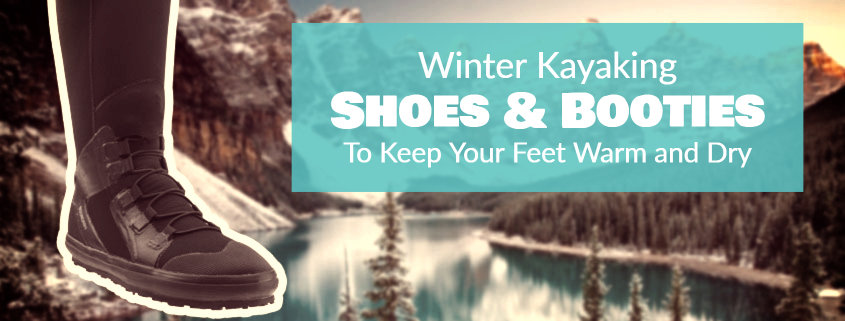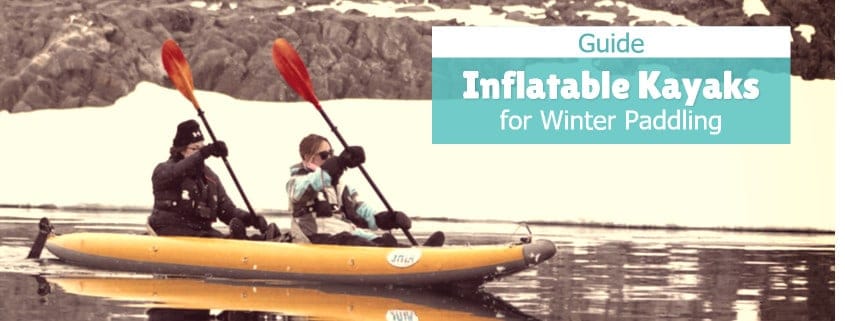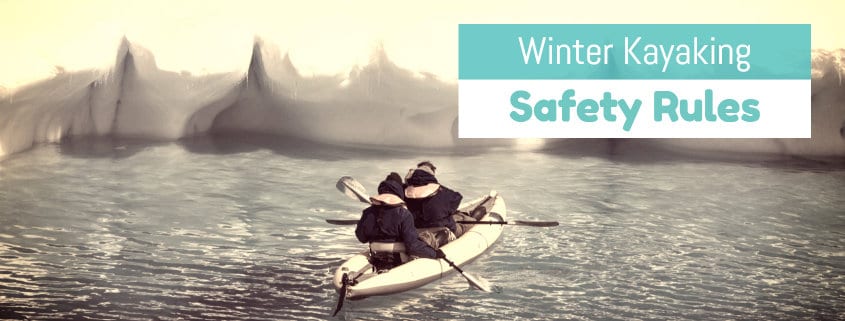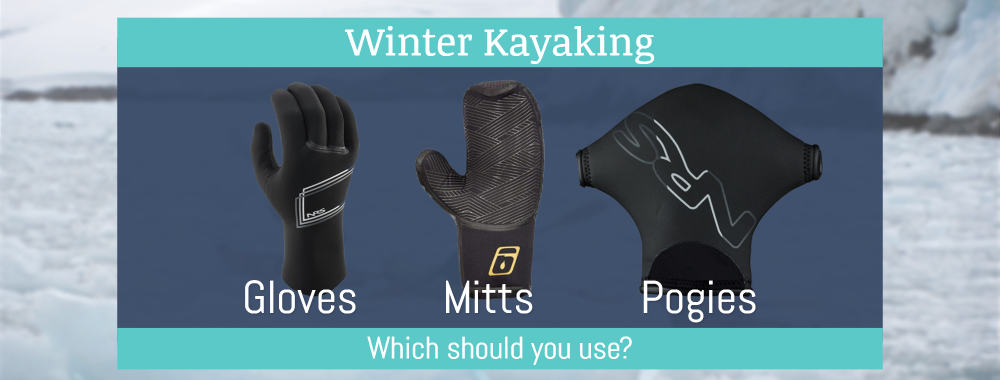Did you know that your body heat decreases 4x faster in cold water than in cold air at equal temperatures? Getting drenched without being prepared will lead to rapid heat loss, which can result in a cold shock, hypothermia, or even worse…
But if you choose your winter kayaking clothing and gear properly (as you are about to learn), paddling in cold weather is a blast.
This article will teach you how to dress for kayaking during winter.
Contents
Fundamentals of winter kayaking clothes
Learning how to dress for winter paddling is important for keeping yourself safe during paddling in freezing water. When it comes to deciding what to wear, there are a few fundamental things you need to keep in mind.
Dress appropriately for the water temperature
When you pack your clothes, you need to consider the temperature of the water you will paddle in, not the temperature of the air.
Air temperature can be deceiving.
Beginners often under-dress when the air temperature is mild. Just because you get a nice, mild, sunny winter day, the temperature of the water can still be near freezing.
When you dress for winter kayaking, you need to prepare for the possibility of entering the water. It will happen sooner or later.
You can see the present water temperatures here.
Layering clothes
On any winter day, the air temperature will swing up and down. Your body’s temperature will also increase as you paddle and exert yourself, but it will drop sharply as you rest, or worse, go overboard and get wet.
Having several layers of clothing ready to take off or put on is the only way to keep yourself comfortable during your winter journey.
There is an easy to remember rule when it comes to layering winter kayaking clothes:
Wick, warmth, and weather
- Wear water-wicking fabric on your skin.
- Insulate with warm fabrics.
- Weather-proof yourself with outer garments suitable for the weather conditions you will be dealing with.
I will talk about this subject more extensively later in this article.
No cotton at all
Cotton clothing is not to be worn during water activities, especially in winter.
Why?
- Cotton soaks up water like a sponge, which is the last thing you want if you get wet on a freezing day.
- When you wear cold, wet clothes, your body loses a tremendous amount of body heat trying to warm it up to body temperature.
- It takes a long time for wet cotton to dry, even if you put it next to a campfire.
In summary, the clothes you wear kayaking should retain very little water.
Have dry clothes ready
Always have extra clothes ready in a dry bag when you go kayaking in cold weather. If you get wet, the dry clothes could be a lifesaver.
And even if you stay dry, a change of clothes after a day of paddling will feel great.
Preparing for a swim will save your life
When you are out on the water, there is always a chance that you will go overboard. Even if you are an experienced paddler.
You need to prepare for the worst case scenario, since you may not be close to shore or dry clothes right after getting wet.
Dress in a way that will keep you comfortable, even if you have to paddle for a while after getting soaked.
Drysuits vs wetsuits during kayaking
When you go kayaking during the colder months, you need to wear either a wetsuit or a drysuit to keep yourself warm in case you fall overboard. This is fundamental in a proper winter kayaking clothes setup.
Wetsuits for kayaking
Wetsuits are made of neoprene. They trap a thin layer of water between the neoprene layer and your skin. This layer of water acts as insulation. It is warmed by your body, and it keeps you warm.
The water is not released through the suit, it does not circulate.
Wetsuits are used by scuba divers, surfers, and boaters alike.
You can get wetsuits in all kinds of thicknesses. Naturally, the thicker it is, the warmer it keeps you, but the more restrictive it will be to move around in.
It is important to get a wetsuit that fits you exactly, and that you can paddle in without restrictions. If you buy one online, make sure you try it on when you get it, and change sizes in case it is not perfect fit.
Many kayakers, including myself, choose a wetsuit that has full legs but no sleeves, called Farmer John wetsuit. This style is more comfortable when paddling, but as you would expect, it does not provide the protection a sleeved wetsuit does. Wearing a dry-top over a wetsuit is a great combo. I’ll talk about dry-tops in the drysuit section.
Pros of wetsuits
Cons of wetsuits
Drysuits for kayaking
In contrast with wetsuits, drysuits are 100% waterproof. They do not allow any water to enter the suit, by closing all ankle, wrist and neck opening with latex gaskets.
These gaskets last for years, but will wear out and tear at some point. They can be replaced though, so you don’t need to buy a new suit every few years.
Drysuits are more expensive than wetsuits, and needed for kayaking in extreme cold conditions.
Pros of drysuits
Cons of drysuits
Here is a detailed article I wrote on how to choose drysuits and which ones are the best.
When do you wear a wetsuit vs drysuit during winter kayaking?
The decision on what to wear for winter kayaking should be based on the temperature of the water you will be paddling in.
If the temperature of the water is below 50°F (10°C), you should definitely wear a drysuit (not a wetsuit) while kayaking. In the 50-60°F (10-15°C) range, a thick wetsuit or a wetsuit with a dry-top is good enough.
Here is a helpful guide to help you decide on whether to wear a wetsuit or a drysuit on your trip.
| Water Temp | Risk of Hypothermia | Clothing |
|---|---|---|
| 70°F < | Low | 3 mm wetsuit or shorty |
| 60-70°F | Moderate | 5 mm wetsuit |
| 50-60°F | High | Drysuit or 7 mm wetsuit, or wetsuit with dry-top |
| > 50°F | Extreme | Drysuit |
Layering clothes for cold water kayaking
As I mentioned before, you need to get used to layering your garments if you go winter kayaking. You need to be able to adjust to different conditions throughout the day, as the temperatures of the air and your body change.
Layering clothes is very important for staying warm and comfortable.
There are 3 layers you wear when kayaking in cool weather.
Base layer/inner layer
If you wear a drysuit, the base layer of your paddling attire needs to wick moisture away from your body, so it should consist of synthetic fabrics.
If you wear a wetsuit, the wetsuit itself is your base layer. Nothing should be worn under a wetsuit, other than your non-cotton underwear or a swimsuit
Second insulation layer
The second layer of your winter paddling attire is meant for insulation.
With drysuits, you can wear 1 or 2 layers of warm sweaters, so you can adjust and stay comfortable. This layer should also consist of materials that do not retain water yet insulate well, such as wool or fleece if it’s cold.
With full-body wetsuits made of neoprene, the water it traps between your skin and the suit acts as the insulation layer.
If you wear a Farmer John wetsuit, you will be wearing a dry-top over it, in which case you should layer as you would under a drysuit.
Outer layer to protect against the elements
The outer layer of your clothing should consist of garments that shield you from whatever nature throws at you: rain, sun, wind, water spray, etc.
If you get a drysuit, that will be your outer layer. Underneath your drysuit, you would wear non-cotton long underwear as the base layer and fleece middle layers.
Specially made paddling jackets are a good option for your outer layer if you wear a wetsuit. They have closed necks and wrist cuffs to keep out rain or spray, so they are ideal in “warmer” weather.
Dry-tops are the next step up before a drysuit. Dry-tops are basically waterproof paddling jackets, which have gaskets at the neck, wrist, and waist. They are great for experienced paddlers who do Eskimo rolls and have a sit-inside spray skirt, but will let water in if you fall into the water. Wearing a Farmer John wetsuit under a dry-top is a great option.
Hats for kayaking in the cold
You lose a lot of heat through your head, so ensure you get head protection suitable for the temperatures you will be kayaking in. Whole-body temperature regulation starts by keeping your head warm.
If you need a helmet, make sure you wear a skullcap underneath it. A thick synthetic ski hat will do if your route does not warrant a helmet.
Your best option is to get a neoprene full coverage hood, which keeps your head warm and keeps water out in case you fall in.
You should also have a face mask ready for paddling in the cold.
Kayaking gloves to keep your hands warm
Protecting your hands against water and cold is imperative. Remember, frostbite can set in quickly in freezing weather.
Regular gloves are not suitable for waterlogged winter kayaking. You need either waterproof kayaking gloves or pogies to keep your hands warm and dry.
Here is an article on what types of winter kayaking gloves you can choose from.
Pogies are neoprene mittens wrapped around the paddle shaft. You put your hands into them and can grab the plastic with your bare hands. This extra contact provides more control of the paddle. This becomes important in whitewater if that is your thing.
Waterproof wetsuit gloves and mitts are made of neoprene, just like wetsuits. They are warmer, but their thickness leaves less control of the paddle.
Footwear for winter kayaking
Keeping your feet warm is important not just for comfort, but for your blood circulation as well.
You should get kayaking wetshoes or booties made of neoprene, as it will keep your feet warm even if you enter the water. These booties have thick rubber soles, which provide grip when walking across rocks in our out of the water.
They come in different styles based on ankle coverage. The taller booties are better at keeping your feet warm, as they generally don’t let water get in.
Here is a detailed guide on selecting the best shoes for winter kayaking, you should read it if you’re looking for proper footwear for paddling in the cold.
If you want to learn more about paddling in the cold, have a look at my winter kayaking guide.
What to wear for winter kayaking?
If you’ve gotten this far in the article, you should have a pretty good idea of what you should wear for kayaking in the cold.
Here is a summary of the things you need to be mindful of when choosing your exact winter paddling attire:
- Don’t wear cotton.
- Dress for water temperature, not air temperature.
- Layer appropriately, as it’s easier to take things off if you’re hot, than being cold.
- Keep your extremities warm. Use suitable gloves to protect your hands and warm footwear.
- Wear a hat, as you lose a lot of head through your head.
Kayaking doesn’t have to stop when the weather gets cold, as long as you dress appropriately. Have fun, and stay safe!

